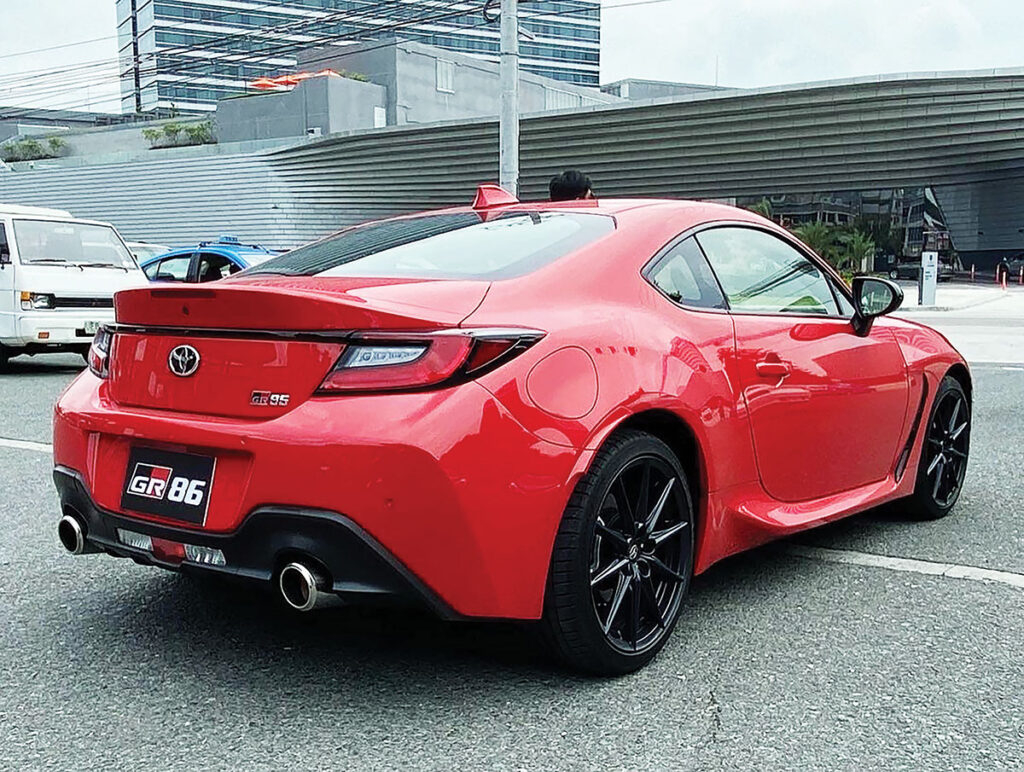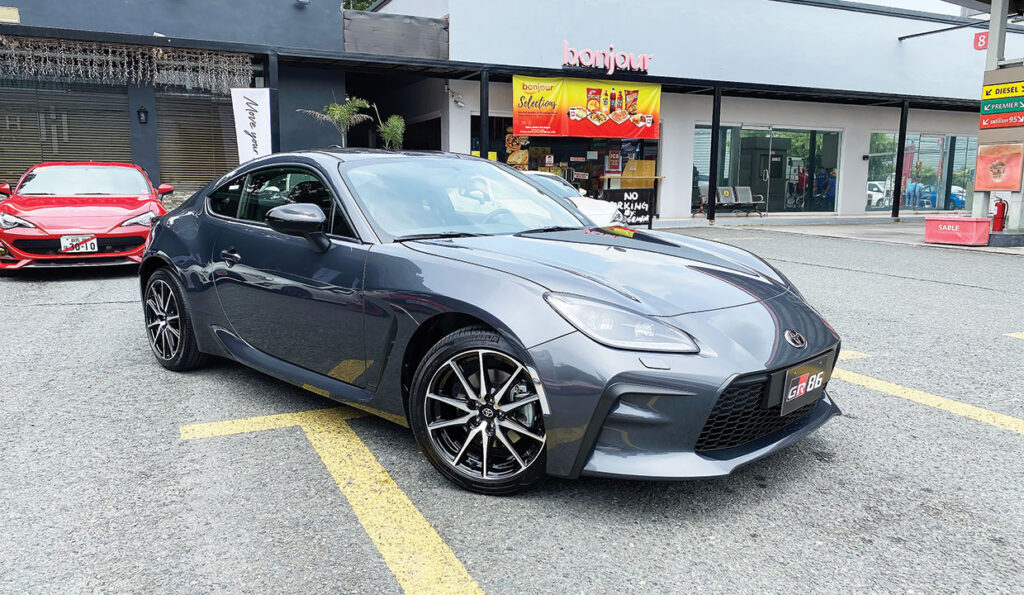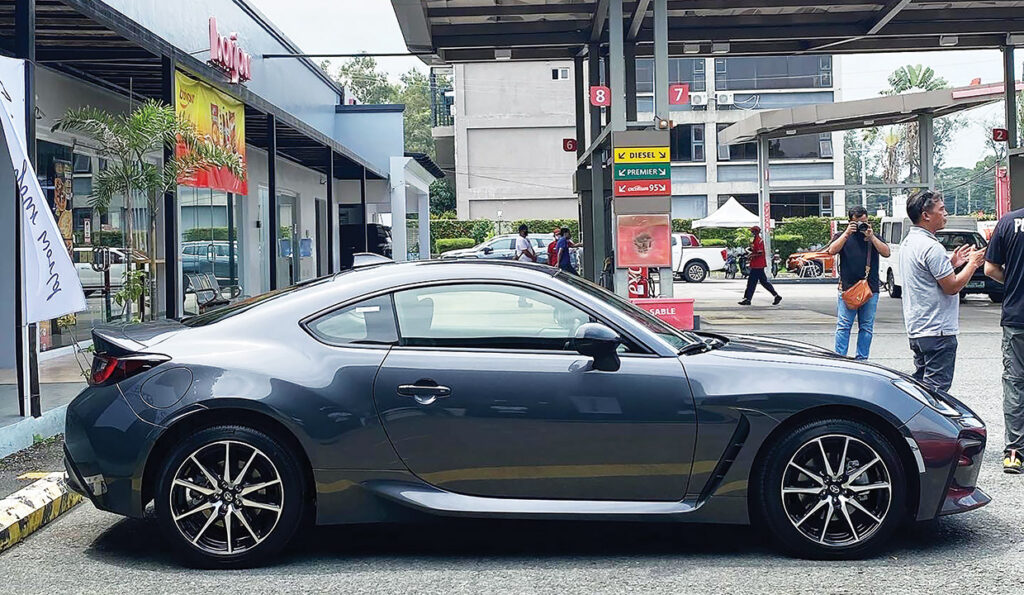In 2012, Toyota Motor Philippines introduced the 86—a re-imagination of their legendary AE86 or better known by its Japanese name, the “Hachiroku.” The approachable, affordable rear-wheel drive sports coupe became a bestseller in its own right, and brought excitement back to the Toyota badge.
A decade later, the country’s bestselling car brand has brought in the second-generation model. Now imbued with the Gazoo Racing spirit, the 86 has now been re-christened to the GR86. Fitting in perfectly alongside the GR Supra and GR Yaris, the GR86 is the entry point to the GR range, and one that rewards drivers with a sport-focused handling and performance.
While the general platform is carried over from the first-generation 86, chassis engineers focused on reducing its weight and lowering its center of gravity. There is wider use of aluminum and other light-but-strong materials and strategic strengthening of the car’s frame to achieve greater rigidity all-round. The numbers say it all: lateral front rigidity is up 60 percent, overall rigidity is up 50 percent, center of gravity is lower by 1.6 mm, and its front-to-rear weight distribution is at 53 percent front, 47 percent back — one of the best balanced 2+2 sports cars in the market.

Even more impressive, despite the adoption of the larger engine and better collision protection, the GR86 weighs more or less the same as the outgoing 86.
Under the hood resides a larger 2.4-liter horizontally-opposed 4-cylinder engine. The high-compression normally aspirated engine generates 237hp at 7,000 rpm and 250Nm of torque from as low as 3,700 rpm. This is then mated to either a 6-speed manual or 6-speed automatic, both with standard cruise control.
All in all, the GR86 does the 0 to 100 km/h in just 6.3 seconds with the manual, and 6.9 seconds for the automatic. Top speed is pegged at 226 km/h for the manual, and 216 km/h for the automatic.
Moreover, the exhaust produces a satisfying “growl” under acceleration, augmented by an Active Sound Control (ASC) system that transmits the sound of the engine to the cabin through a dedicated speaker in the center of the instrument panel. ASC volume in the GR86 automatic is adjusted according to the drive mode selected — higher for Sport than Normal mode.
In terms of design, the GR86 takes on an aesthetic centered around “functional beauty.” This aims to marry the functional quality of a racecar with road car styling.
A careful evolution of the first-generation 86’s low-slung look which expresses its classic front engine/rear-wheel drive setup, designers integrated detail references to some of Toyota’s great sports cars of the past such as the 2000GT and the AE86.
Upfront, it has parabola-shaped LED headlights with headlamp washers, and a grille with a “G” motif mesh pattern, while at the back is a LED lighting cluster that runs across the entire width of the car, emphasizing its wide stance.
The two variants of the Philippine-spec GR86 is quickly identifiable by its wheels. The base manual variant comes with two-tone 10-spoke 17-inch alloy wheels, while the top-of-the-line automatic has samurai-sword inspired 18-inch black alloy wheels.
Inside, the GR86’s main goal is to offer the best possible layout for usability and operation. Around the driver, controls are located for intuitive operation, including a climate control panel in the center console with large LED-illuminated dials and piano key switches, and door armrests with integrated release handles and long pull handles. The functionality of the center armrest has been improved with cup/small bottle holders, two USB ports and an AUX socket. The cupholder has a new split-opening lid that can be used as an armrest when closed. The 8-inch touchscreen multimedia display with Apple CarPlay and Android Auto is angled for easy viewing from the driver’s seat.
Also standard on both the manual and automatic variants is a 7-inch driver display with a GR-branded start-up animation. The manual transmission variant comes with fabric seats with a G motif as well as a soft-padded leather-like trim on the door cards. Meanwhile, the automatic transmission variant swaps the fabric seats for a Ultrasuede/leather combination, and Ultrasuede trim on the door cards.
Aside from the larger wheels, stickier tires, and more luxurious interior accouterments, the automatic transmission variant of the GR86 also gets a driver support system for the first time. This adds functionalities such as: Pre-Collision Braking with Pre-Collision Brake Assist, Lane Departure Warning, Lane Sway Warning, Adaptive Cruise Control, High Beam Assist, Lead Vehicle Start Alert, and Pre-Collision Throttle Management.
Both variants also come with a rear back-up camera, but only the automatic transmission adds rear back-up sensors too.
The 2023 Toyota GR86 goes on retail starting on August 26, 2022. It is priced at Php 2,328,000 for the manual and Php 2,499,000 for the automatic. However, 19 GR Performance-accredited Toyota dealerships nationwide are now taking reservations, namely: Toyota Alabang; Toyota Bacoor, Cavite; Toyota Batangas City; Toyota Calamba, Laguna; Toyota Cebu; Toyota Commonwealth; Toyota Davao City; Toyota Global City; Toyota La Union; Toyota Lipa, Batangas; Toyota Mabolo Cebu, Toyota Makati, Toyota Manila Bay, Toyota Otis, Toyota Quezon Avenue, Toyota San Fernando, Pampanga; Toyota San Pablo, Laguna; Toyota Silang Cavite; and Toyota Tacloban Leyte.



